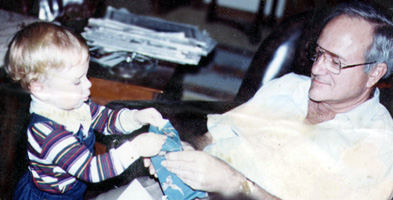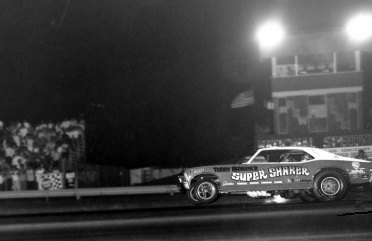 |
That sounds a little cavalier and off-handish, but that's what Jim
Tice Jr. said his late father told him about the sport he so greatly
influenced. At the time he said it, Tice Sr. was nearing the end of
his days in 1982 and had no great words about how he wanted to be remembered.
No I-just-wanted-to-give-
the-little-guy-a-place-to-race-isms. He did say that he was in it for
the racer, the track owner, and sanctioning body. However, unlike his
competitors at NHRA, he had no altruistic long-range visions for the
sport. Certainly, he wanted it to prosper, but he seemed to be a guy
more interested in producing a good show and seeing everyone make a
buck, if possible. He was indeed a businessman, racer, and, as corny
as it sounds, a visionary, yet despite all that he accomplished, he
probably had his moments, many moments, given the competition and the
hassles, where he wondered how in the hell he got involved in the weird
and wacky world of being a drag racing sanctioning body topkick. The
early 1970's show this closer to the truth than one might think.
 |
|
Jim Tice Sr. is shown here on his last birthday with grandson
Scott Lynn.
Photo courtesy Jim Tice Jr.
|
During this time, the drag racing business was showing its fangs to
Tice and made profits difficult to realize for him and his organization.
Along with the boost rival sanction bodies NHRA and IHRA got from the
R.J. Reynolds involvement, the Tices had plenty of woes.
The Garlits PRA Challenges of 1972 and 1973 were tremendous aesthetic
successes for AHRA, likely their greatest ever, but not so financially.
Not only that, but the 1973 season was hampered with weather problems
that really dealt the Kansas City crowd a body blow.
"We lost $3.5-million in 90 days in 1973," Tice Jr. said. "We leased
all our tracks, Tulsa, Fremont, Orange County, and it cost us around
$250,000 a month in fixed overhead alone. Drag racing is not a cheap
proposition on the pro level.
"On top of all that, it rained on us in 1973 and when you're rained
on in drag racing, you're screwed. The two Tulsa events (PRA National
Challenges) did not make us any money. We really didn't figure on a
profit in the 1972 event, but we thought we'd improve the following
year. I'd say we lost about 70-grand on the first one and close to that
the following year.
"The press said the races were Garlits' deal and certainly he played
a role, but we paid the bills.
"It just seemed nothing went right that year. As one more example,
we held a Grand American at Orange County, a popular, money-making Southern
California track. Unfortunately, we ran opposite the California Jam,
one of those huge outdoor rock concerts, and we took a beating at the
gate."
(It was even rumored that Jim & Ruth Tice's residence in Kansas had
been burglarized that year and that a large amount of cash earned at
the races had been stolen and never recovered.)
After the two Tulsa races, the Tices let Garlits do his own thing in
regards to National Challenge races. One of the key factors in letting
the challenges go arose in 1972, when a few of the racers who had two
cars ran both the NHRA U.S. Nationals at Indy and the Challenge at Tulsa.
For example, Don Prudhomme and Tom McEwen worked both sides of the fence
in this regard. The idea from the Tices' standpoint was to run Tulsa
instead of Indy.
The 1973 race was run a weekend before Indy, basically subverting the
original intent of the race designers, which was to have the racers
choose AHRA and Tulsa over Indy. As Tice Jr., put it, "We saw at that
point that there was no way the racers would turn down Indy."
These considerations and the fact that they lost money both years made
the decision to slide away from the PRA races easier. In 1974, Garlits
moved the show up to New York National Speedway in Center Moriches,
L.I., N.Y., and the Tices hosted an AHRA Challenge at Tulsa, which was
nothing more than a Grand American event that capitalized on a familiar
name.
 |
| Terry Hedrick's "Super Shaker" Nova explodes
from the line at the 1970 AHRA Nationals at New York National Speedway. |
|
|